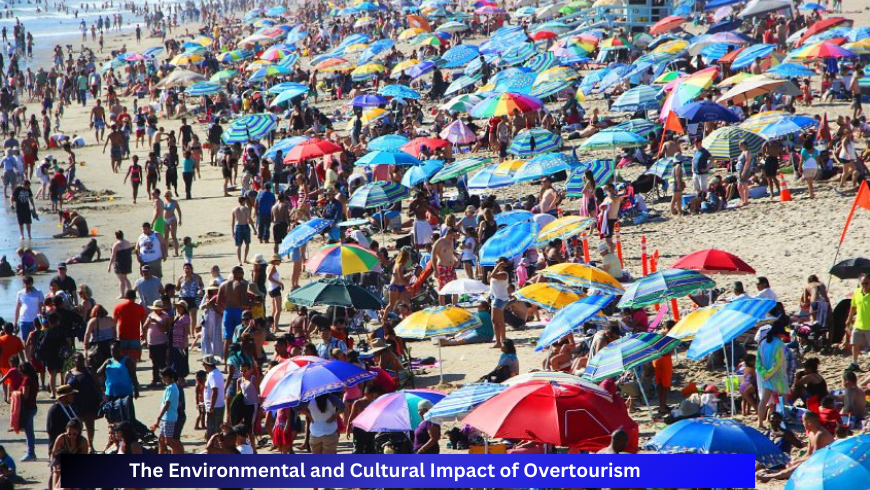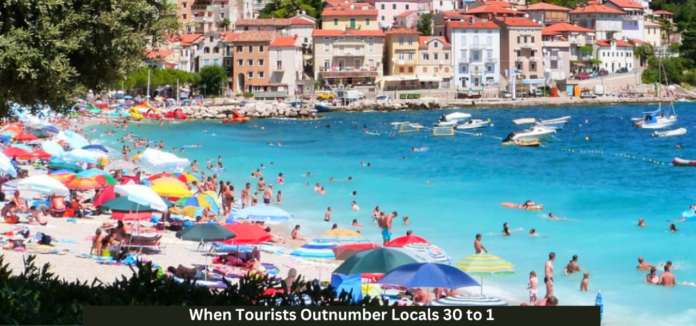Europe, with its rich history, diverse culture, and stunning landscapes, has always been a top destination for travelers from around the world. However, in certain cities, the number of tourists has skyrocketed to a point where they outnumber locals by a staggering 30 to 1. This phenomenon, known as overtourism, is having significant impacts on these destinations. Let’s explore some of the busiest cities in Europe where this trend is most pronounced and the effects it has on both the environment and local communities.
The Tourist Tsunami: Cities Overwhelmed by Visitors
In cities like Venice, the influx of tourists has reached unprecedented levels. This iconic floating city, renowned for its canals and historic architecture, has become a victim of its own popularity. The overwhelming number of visitors has led to concerns about the preservation of its unique character and environment. The situation is similar in Barcelona, Spain, where the vibrant culture, stunning beaches, and famous architecture have attracted millions of tourists. Unfortunately, this has put immense pressure on the city’s infrastructure and local communities.
Amsterdam’s Charm Under Strain
Amsterdam, with its charming canals, world-class museums, and liberal atmosphere, has also seen an overwhelming number of tourists. The city has become a hotspot for young travelers, but this popularity has led to overcrowding. As a result, concerns about preserving Amsterdam’s authentic character have arisen. The strain on public transportation, long queues at attractions, and a shortage of accommodations are just a few of the issues the city is grappling with.
Dubrovnik’s Struggle with Fame
Dubrovnik, a picturesque Adriatic gem that gained global fame as a filming location for “Game of Thrones,” has experienced a massive tourism boom. While its beauty is undeniable, the sheer number of visitors has strained local resources and caused tensions among residents. The impact of overtourism in Dubrovnik is evident, with the local culture and way of life increasingly overshadowed by the demands of mass tourism.
The Environmental and Cultural Impact of Overtourism

The overwhelming number of tourists in these cities has far-reaching consequences. One of the most significant is the environmental impact. Increased waste, pollution, and erosion are major concerns, particularly in fragile ecosystems like Venice. Moreover, the local culture and way of life can be overshadowed by the influx of tourists, leading to a homogenized experience that lacks authenticity. While tourism can boost the economy, it often benefits large corporations and chains rather than local businesses and communities, further exacerbating the issue.
Finding a Balance: Measures to Manage Tourism
To address the challenges of overtourism, many European cities are implementing measures to manage the influx of visitors. One approach is to charge visitors a fee to help fund infrastructure and preservation efforts. Another strategy is to limit access to popular attractions through ticketing systems or by promoting off-peak travel. Encouraging tourists to visit less crowded destinations and patronize local shops and restaurants are also steps in the right direction. While tourism is crucial for many European economies, finding a balance between welcoming visitors and preserving the quality of life for residents is essential.
Preserving Europe’s Treasures
The rise of overtourism in Europe‘s most popular cities is a complex issue that requires thoughtful solutions. By implementing measures to manage the number of visitors and supporting local communities, these cities can continue to thrive while preserving their unique character and environment. As travelers, it is important to be mindful of the impact we have on the destinations we visit and to make choices that contribute positively to the places we explore.










